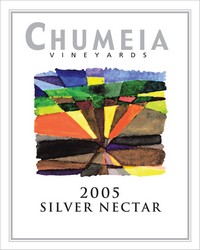|
|
Chumeia Vineyards Silver Nectar, |
 |
|
Wine Details
Price:
$10.00 per bottle
Description:
Fresh apricot, cantaloupe, honeydew melon and vanilla--this wine is light and fruity with a slightly sweet finish that leaves your mouth watering for the next sip! A perfect combination of Torrontes (a white floral varietal similar to Muscat) and Chenin Blanc. This one is flying out of our tasting room and is sure to sell out quickly.
|
|
|
Reviews
|

|
|
|
Back to Field Recordings. information
|
|
|